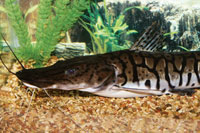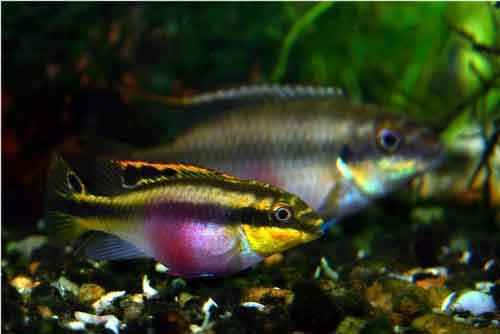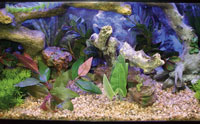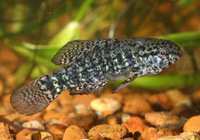
Q. How important is temperature in freshwater aquariums? The climate here in Florida should allow me to keep my tanks outside on a covered porch. I was thinking about setting up several small tanks without heaters. There would probably be some temperature fluctuation. Would that be a problem?
Anna Newmann
Vero Beach, Florida
A. While freshwater fish are far more tolerant to fluctuations in water conditions than their marine cousins, stability really is the name of the game in any aquarium. The question would be how much temperature fluctuation could take place and what species would you be keeping. As you may have expected, some species of fish are more tolerant to temperature fluctuation than others. Here in Maryland, where I live, local species such as yellow perch and northern pike endure an almost unimaginable temperature change. Water temperature in the summer is in the mid-70 degrees to low-80 degrees Fahrenheit, but goes well below freezing in the winter months. Some lakes throughout the United States often hit well above 100 degrees in the summer and down into the 50s in the winter months.
Certain fish species can survive and even thrive with varying temperature changes. The problem is that many of the freshwater fish offered for sale are tropical. Any temperature below 73 to 75 degrees is a red zone for these animals. Other species such as discus fish require much higher temperatures in excess of 85 degrees to thrive. If there is temperature fluctuation for any fish species it is vital that it is slow and consistent. It is best for the temperature to drop slowly, over the course of hours or days and then return to a high and eventually balancing out with little change.
Several small tanks, depending on their size, would likely experience sharp temperature changes. I would assume that there is at least several degrees temperature fluctuation from day to night in Florida depending on the season. This could potentially be a disaster for many tropical species. I would recommend keeping heaters in each of the aquariums.
If the reason you do not want to add heaters is to avoid the clutter that power cords and submersible heaters can cause, then another opportunity may exist. Doing one large freshwater aquarium may allow for the “heater-less” option. Larger volumes of water react to temperature change more gradually than small tanks. A 55-gallon or larger aquarium may be apt to be placed outside and the temperature within that aquarium will not change as drastically. If you could keep your water temperature within 3 degrees variation, day-to-night, then I think your aquarium would be just fine.
Believe it or not, outdoor aquariums are not uncommon in areas of the country like Florida with higher temperatures. There are many marine aquarists that have outdoor reef aquariums with large and elaborate systems for raising corals. I have read about many outdoor planted freshwater tanks as well. One thing to consider when keeping an outdoor aquarium; many of the plants that we keep in aquariums are not native to the areas of the United States where we live. Any spores from those plants that get into a water supply, (stream, lake or river) can potentially take root and cause a major invasive problem. Caulpera algae has done this in California. Being prudent and monitoring where your aquarium water ends up after a water change can help make sure that this type of disaster doesn’t take place. Sadly, aquarists have taken the blame for several serious invasive species problems, both plant and animal related, so extra caution is a must anytime we work outside with aquarium water.
 Shovelnose Catfish
Click image to enlargeShovelnose catfish.
Q. One of the w
Shovelnose Catfish
Click image to enlargeShovelnose catfish.
Q. One of the w
 Kribensis Care and Breeding
Kribs are small, colorful cichlids that have become a staple
Kribensis Care and Breeding
Kribs are small, colorful cichlids that have become a staple
 Aquarium Fish Hiding Places
Imagine having to spend an extended period in a room w
Aquarium Fish Hiding Places
Imagine having to spend an extended period in a room w
 Fish Aquarium Setup Decorations
Few things are as captivating as a beautifully decorated aqu
Fish Aquarium Setup Decorations
Few things are as captivating as a beautifully decorated aqu
 Pygmy Sunfish
With this installment of Conservation Corner, I thought Id t
Pygmy Sunfish
With this installment of Conservation Corner, I thought Id t
Copyright © 2005-2016 Pet Information All Rights Reserved
Contact us: www162date@outlook.com